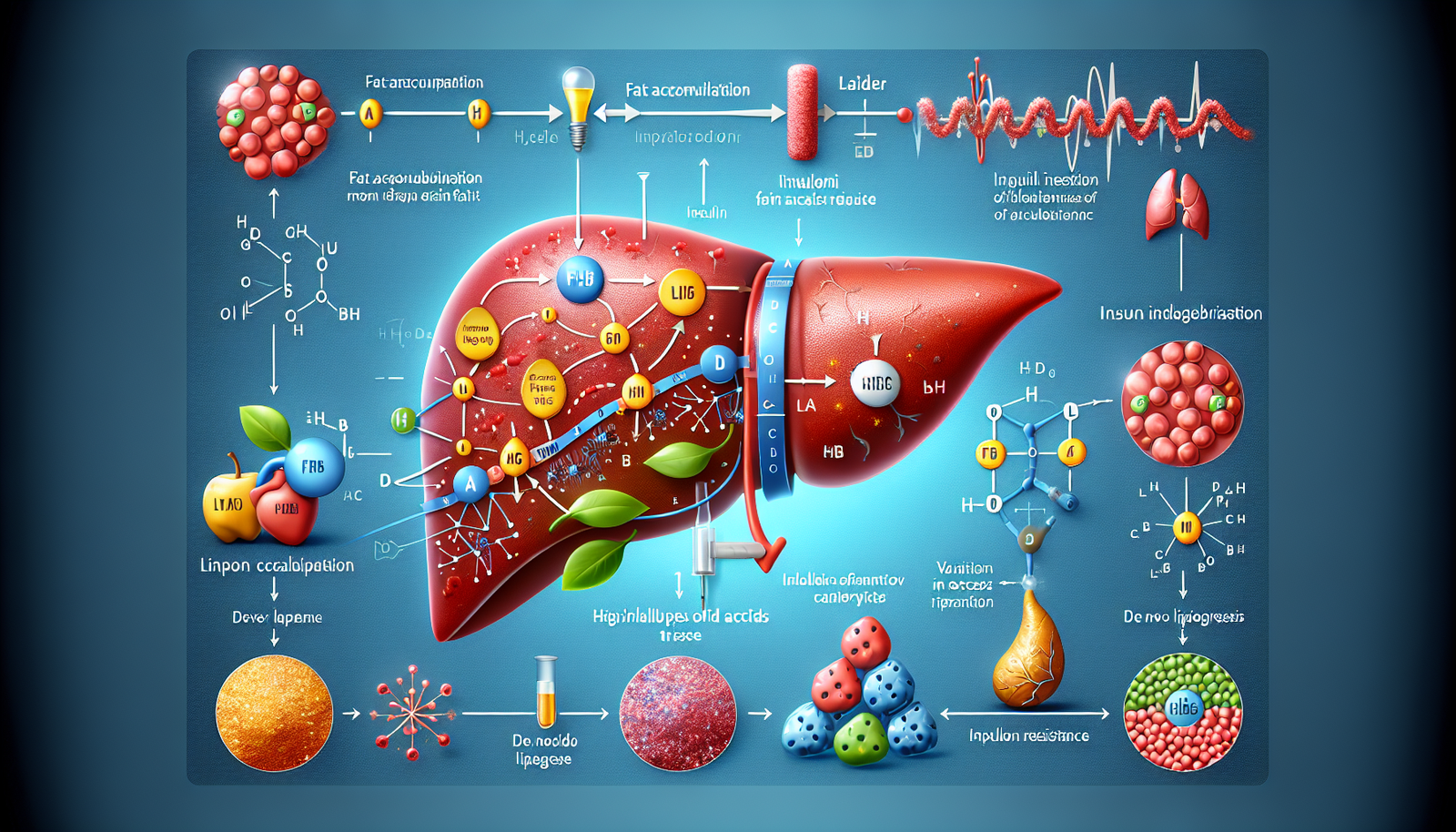Fatty liver disease is emerging as a significant metabolic challenge, affecting millions globally. The liver, often described as the “soccer mom” of metabolism, plays a crucial role in managing nutrients, including fats. This blog delves into the complexities of fatty liver disease, its progression, and actionable strategies for prevention and reversal.
The Liver’s Role in Metabolism
At the heart of metabolism, the liver is uniquely equipped to handle various nutrients, whether it’s creating, storing, or burning them. It manages everything from glucose to fats, and even less common substances like lactate and ketones. However, when it comes to fatty liver disease, the accumulation of fat within the liver becomes a pressing concern. This condition is now recognized as the most common liver disorder worldwide, impacting approximately one in four individuals.
Fatty liver disease is not just about having excess fat in the liver; it can evolve into more severe conditions such as nonalcoholic steatohepatitis (NASH), fibrosis, or cirrhosis. Understanding this progression is critical, as it highlights the importance of addressing fatty liver disease early on.
Insulin Resistance: A Key Player
Insulin resistance is a major factor contributing to fatty liver disease. It consists of two components: impaired insulin action and chronically elevated insulin levels, known as hyperinsulinemia. These elements are interconnected and crucial to understanding how fatty liver disease develops.
In a state of insulin resistance, some cells in the body respond well to insulin while others do not. This leads to high levels of insulin in the blood, which is essential for fat storage in the liver. Without elevated insulin, the liver cannot hold onto fat, making it vital for the development of fatty liver disease.
The Mechanism of Fat Accumulation
The accumulation of fat in the liver primarily occurs through two pathways: the uptake of free fatty acids from adipose tissue and de novo lipogenesis, where the liver synthesizes fat from excess carbohydrates. Both pathways are heavily influenced by insulin levels.
Free fatty acids are released from fat tissue through lipolysis, which is stimulated by low insulin levels. Conversely, when insulin is elevated, it promotes the storage of fat in the liver while also encouraging the liver to create new fat from unused carbohydrates. This dual process can lead to a significant increase in liver fat, especially in insulin-resistant individuals.
Research Insights
- A study by Lambert et al. (2014) found that individuals with fatty liver disease had a threefold higher rate of de novo lipogenesis compared to those without the condition.
- Another research by Donel et al. (2005) indicated that approximately 60% of liver fat originates from free fatty acids.
The Role of Fructose and Alcohol
Beyond insulin resistance, fructose and alcohol significantly contribute to fatty liver disease. Unlike glucose, fructose is primarily metabolized in the liver, leading to fat accumulation. Studies have demonstrated that high fructose intake results in increased liver fat and de novo lipogenesis.
Alcohol also plays a detrimental role by disrupting fat metabolism. It inhibits the liver’s ability to burn fat and promotes fat storage, exacerbating the fatty liver condition. Furthermore, many alcoholic beverages contain high levels of sugar, compounding the issue.
Diagnosis and Conventional Treatments
Diagnosing fatty liver disease often involves imaging techniques like ultrasound or MRI. However, blood tests measuring liver enzymes, such as ALT and AST, are more common. An elevated ALT to AST ratio can indicate fatty liver disease.
In terms of treatment, pharmaceutical options include PPAR gamma agonists, which help create new fat cells and improve insulin sensitivity. However, these drugs can lead to weight gain, which may not be desirable for all patients.
Strategies for Prevention and Reversal
While conventional treatments exist, lifestyle modifications are the most effective way to prevent or reverse fatty liver disease. Here are some actionable strategies:
- Control Carbohydrate Intake: Reducing carbohydrates helps lower insulin levels, which can improve insulin sensitivity and reduce liver fat.
- Limit Fructose Consumption: Avoid high-fructose corn syrup and limit sugary beverages, as these can contribute to liver fat accumulation.
- Reduce Alcohol Intake: Minimizing alcohol consumption is crucial for liver health, as it can exacerbate fat storage in the liver.
- Focus on Whole Foods: Prioritize whole fruits and vegetables over processed foods to improve overall metabolic health.
Frequently Asked Questions
What is fatty liver disease?
Fatty liver disease is a condition characterized by the accumulation of fat in the liver, which can progress to more severe liver damage if not addressed.
How is fatty liver disease diagnosed?
Diagnosis typically involves imaging tests like ultrasound or MRI and blood tests that measure liver enzymes.
What causes fatty liver disease?
Common causes include obesity, insulin resistance, excessive alcohol consumption, and high fructose intake.
Can fatty liver disease be reversed?
Yes, lifestyle changes such as controlling carbohydrate intake, reducing alcohol, and maintaining a healthy diet can help reverse fatty liver disease.
What are the symptoms of fatty liver disease?
Many individuals with fatty liver disease may not experience symptoms initially. However, some may experience fatigue, discomfort in the upper right abdomen, and unexplained weight loss.
Conclusion
Understanding fatty liver disease is essential for addressing this prevalent metabolic issue. By recognizing the role of insulin resistance, fructose, and alcohol, individuals can take proactive steps to improve their liver health. Implementing dietary changes and lifestyle modifications can significantly impact the progression of fatty liver disease and promote overall metabolic well-being.
For more information and resources, consider visiting Insulin IQ for further insights into metabolic health.

